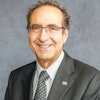
Why don't patients show up for scheduled imaging exams? A study published May 10 in the Journal of the American College of Radiology that included nearly 3 million exams over 16 years found that no-shows are due to a mix of reasons.
Researchers found a strong association between no-show rates and the type of modality being used, with mammography reporting the highest no-show rate and radiography the lowest. Also, appointments with longer lead times had higher no-show rates, with more no-shows for those scheduled six months in advance than for appointments booked just one week ahead of time.
The team from the University of Washington, led by Dr. Joshua Rosenbaum, noted that no-show visits reduce the efficiency of radiology departments and can negatively affect overall patient health, contributing to diagnosis delays that can lead to morbidity and mortality (JACR, May 10, 2018). Previous studies have estimated that no-show rates in healthcare can vary from 2% to 50%, depending on the clinical setting and patient demographic.
The researchers decided to focus specifically on no-show rates in radiology by examining rates in a system of four hospitals and imaging centers in Seattle that are affiliated with the University of Washington. They queried the system's RIS for outpatient appointments scheduled from 2000 to 2015, ultimately acquiring data for 2.9 million patient visits.
Rosenbaum and colleagues found a total of 94,096 no-show visits, resulting in a no-show rate of 3.25%. Rates varied over the years, from 3.36% in 2000 to 2.26% in 2015. Rates also varied by imaging modality, as shown in the following table.
| Rates of patient no-shows by imaging modality | |
| Modality | No-show rate |
| Mammography | 6.99% |
| Ultrasound | 4.45% |
| MRI | 3.70% |
| Nuclear medicine | 3.54% |
| CT | 3.35% |
| Computed radiography | 1.24% |
The group speculated that the difference in rates by modality could be related to the diagnostic purposes of the scans, as well as factors such as cost, time, and radiation exposure.
Further variations were found based on the amount of lead time involved in scheduling the exam. The highest no-show rates (9.46%) were for exams scheduled with six months of lead time, followed by 30 days (5.26%) and one week (2.71%).
Older patients also seemed to be the most conscientious about sticking to their appointments, with patients 90 years and older having a no-show rate of less than 2%. In comparison, patients ages 40 to 59 had the highest rate, at 3.80%, while patients older than 60 remained below 3%.
The researchers concluded that their data could help radiology departments and imaging centers take steps to reduce no-shows and, thus, operate more efficiently.
"Understanding these modality-specific trends can help improve scheduling and operations planning and may also encourage the deployment of different patient reminder strategies, depending on the type of examination," they wrote.



















